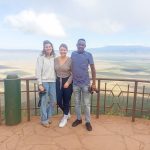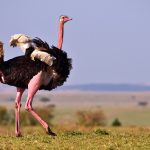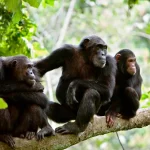
- Kilimanjaro Mountain Safety
-
Written by : Tarimo Expeditions
Kilimanjaro Mountain Safety: A Comprehensive Guide for Climbers
As one of the highest mountains in the world, Mount Kilimanjaro is a popular destination for adventurous hikers and climbers. However, the mountain poses numerous risks and hazards that can be mitigated with proper planning, preparation, and precautions. In this article, we’ll provide a comprehensive guide to Kilimanjaro mountain safety, covering everything from altitude sickness to equipment and training.
Understanding the Risks of Climbing Kilimanjaro
Before embarking on a Kilimanjaro climb, it’s essential to understand the potential risks and hazards. These include altitude sickness, extreme weather conditions, falls, and rock slides, among others. In this section, we’ll explore each of these risks in detail, outlining their causes and consequences.
Altitude Sickness: Symptoms and Prevention
Altitude sickness is a potentially life-threatening condition that occurs when climbers ascend too quickly to high altitudes, causing a lack of oxygen in the body. Symptoms can range from mild to severe and may include headache, nausea, dizziness, and difficulty breathing. In this section, we’ll discuss the causes of altitude sickness and provide tips for preventing and treating it.
Extreme Weather Conditions: Preparing for the Worst
Mount Kilimanjaro is known for its unpredictable weather, which can range from scorching heat to freezing cold. Climbers must prepare for all possible weather conditions, including rain, wind, snow, and hail. In this section, we’ll provide tips for staying safe and comfortable in extreme weather conditions.
Falls and Rock Slides: Avoiding Accidents on the Mountain
Falls and rock slides are common risks on Mount Kilimanjaro, particularly on steep and rocky terrain. Climbers must take precautions to avoid accidents, including wearing appropriate footwear and using safety ropes and harnesses. In this section, we’ll outline the best practices for avoiding falls and rock slides on the mountain.
Planning and Preparation for a Safe Climb
Planning and preparation are essential for a safe and successful Kilimanjaro climb. In this section, we’ll cover everything you need to know about planning and preparing for a Kilimanjaro climb, from choosing a route to training and equipment.
Choosing a Route: Factors to Consider
There are several routes to the summit of Mount Kilimanjaro, each with its own advantages and challenges. Climbers must choose a route that matches their skill level, fitness, and preferences. In this section, we’ll discuss the factors to consider when choosing a Kilimanjaro route.
Training and Fitness: Getting in Shape for the Climb
Climbing Mount Kilimanjaro is a physically demanding activity that requires excellent endurance, strength, and flexibility. In this section, we’ll provide tips for getting in shape and preparing your body for the climb.
Equipment and Gear: Essentials for a Safe Climb
Having the right equipment and gear is essential for a safe and comfortable Kilimanjaro climb. In this section, we’ll provide a checklist of essential items to bring on the climb, from clothing and footwear to camping and cooking gear.
Safety Measures on the Mountain
Once on the mountain, climbers must take several safety measures to minimize the risks and hazards. In this section, we’ll discuss the safety measures that climbers should take during the climb, including acclimatization, hydration, and rest.
Acclimatization: Adjusting to High Altitudes
Acclimatization is a crucial safety measure for climbers, as it helps the body adjust to high altitudes and prevents altitude sickness.
Hydration: Staying Hydrated on the Mountain
Staying hydrated is critical for climbers, as dehydration can exacerbate altitude sickness and other health issues. In this section, we’ll provide tips for staying hydrated on the mountain and discuss the best methods for water purification.
Rest: Taking Breaks to Prevent Exhaustion
Rest is essential for climbers to prevent exhaustion and avoid accidents. In this section, we’ll discuss the importance of taking breaks and provide tips for getting enough rest on the mountain.
Emergency Preparedness and Response
Despite all precautions, emergencies can still happen on the mountain. In this section, we’ll discuss how climbers should prepare for emergencies and respond to them if they occur.
First Aid: Treating Injuries and Illnesses on the Mountain
Climbers must be prepared to provide first aid for themselves and others in case of injuries or illnesses. In this section, we’ll discuss the essential first aid skills and supplies that climbers should have on the mountain.
Evacuation: Getting Off the Mountain in Case of Emergencies
In some cases, climbers may need to be evacuated from the mountain due to health issues or accidents. In this section, we’ll discuss the evacuation procedures and resources available on Kilimanjaro.
Climbing Mount Kilimanjaro can be a rewarding and challenging experience, but it’s essential to take safety seriously. By understanding the risks, planning and preparing carefully, and taking safety measures on the mountain, climbers can have a safe and successful climb. Remember to always prioritize safety overreaching the summit and be prepared for emergencies.
FAQs
How do I prevent altitude sickness on Kilimanjaro?
To prevent altitude sickness, climbers should acclimatize gradually, stay hydrated, and avoid alcohol and caffeine. They should also take medication, such as Diamox, under medical supervision.
What should I pack for a Kilimanjaro climb?
Climbers should pack essential items such as warm clothing, sturdy footwear, a sleeping bag, and a first aid kit. They should also bring sunscreen, sunglasses, and a headlamp.
Can I climb Kilimanjaro without a guide?
While it’s possible to climb Kilimanjaro without a guide, it’s not recommended. Guides are essential for safety and navigation on the mountain.
How long does it take to climb Kilimanjaro?
The duration of a Kilimanjaro climb depends on the route chosen and the climber’s fitness level. The average climb takes between five to eight days.
Is Kilimanjaro safe to climb?
Kilimanjaro can be a safe mountain to climb with proper planning, preparation, and precautions. However, climbers must be aware of the risks and take safety seriously to avoid accidents and emergencies.
Best of Our Tanzania Safaris
From the Wildebeest Migration to the Big 5 and Tropical White Sand Beaches
Explore the best of Tanzania with our curated collection of safaris packages. Experience breathtaking wildlife, stunning landscapes and cultural richness, there’s something for everyone.



